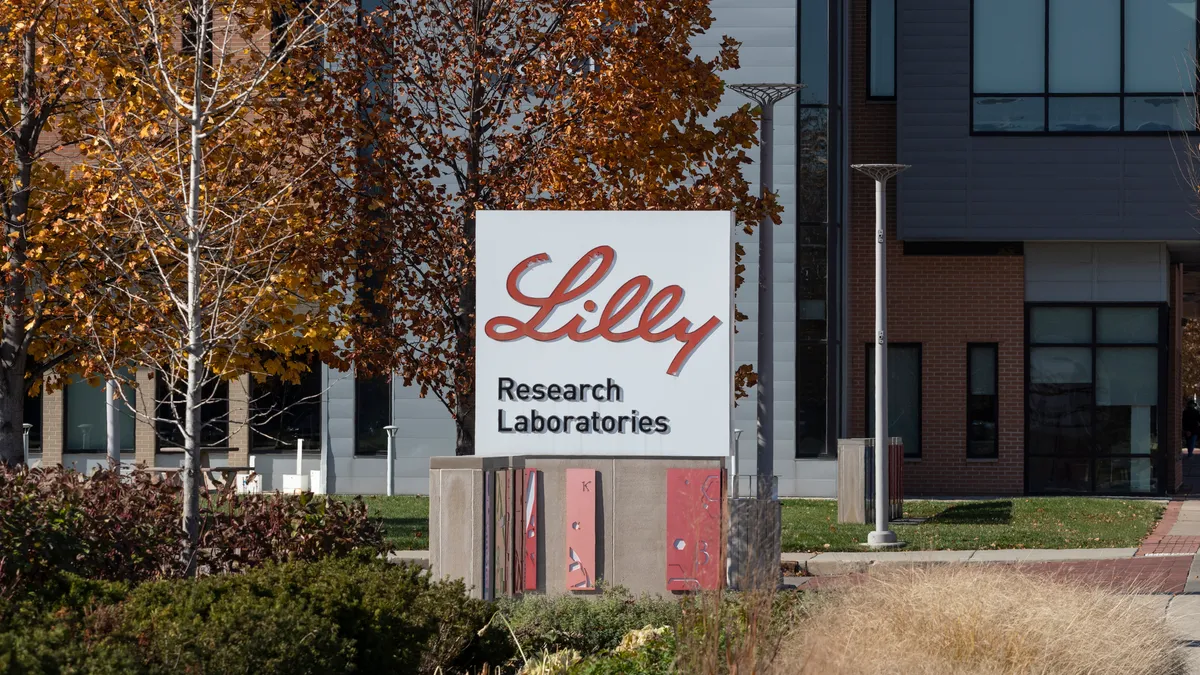After decades of stagnation, the wheels of Alzheimer’s disease innovation turn quickly these days, from early science to clinical results to commercial execution.
The next milestone for the industry could be an approval of Eli Lilly’s amyloid plaque-clearing drug candidate donanemab by the FDA. The agency this week announced that an advisory committee will meet June 10, where experts will vote on whether to recommend the drug for approval.
While the adcomm’s precise agenda has yet to be publicized, the independent experts are likely to focus on specifics from a phase 3 study that showed donanemab slowed disease progression at 76 weeks.
If approved, donanemab would become the third disease-altering treatment for Alzheimer’s to hit the market, following two drugs from partners Biogen and Eisai — Aduhelm and Leqembi. Aduhelm, which failed to pass the advisory committee’s vote but still gained approval, has been pulled from the market leaving Leqembi as donanemab’s main competition.
Sales of Leqembi were slow when the drug first launched at the end of last year, but with the number of patients ticking up steadily, sales reached $19 million in the first quarter this year, Biogen reported.
Eisai has big plans for the drug in the coming years. By 2026, the Japanese company estimates Leqembi will bring in global revenue of 290 billion yen, equivalent today to more than $1.8 billion. By 2032, that number will rise to 1.3 trillion yen, more than $8.3 billion, the company predicted.
If Lilly’s donanemab is approved by the FDA, analysts expect the two drugs could register combined sales of about $10.2 billion in 2030.
These numbers reflect the growing pool of Alzheimer’s patients that includes an estimated 6.9 million Americans, rising to a projected 12.7 million by 2050.
Growing knowledge around Alzheimer’s
The advent of amyloid plaque-clearing drugs like Leqembi and donanemab isn’t the end of the road for Alzheimer’s research. Scientists are still uncovering new secrets of the memory-stealing disease that could lead to better treatments.
This week, researchers at Spain’s Sant Pau Memory Unit published a study showing a potential genetic cause of Alzheimer’s that was once thought to be only a risk factor.
Patients with two copies of the gene APOE4 were found to have a greater risk of developing Alzheimer’s disease in the study among 500 people. They also developed Alzheimer’s symptoms at an earlier age. Further understanding of the genes behind disease progression could allow for earlier diagnosis, even before symptoms arrive.
Although many drug development programs have focused on treatments like Leqembi and donanemab that target amyloid plaques or other physical symptoms like tau tangles in the brain, researchers are finding more reasons to believe the disease is the result of a combination of factors.












